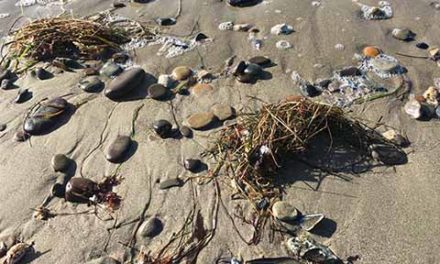Counter Punch May 7, 2018
Then & Now: How much further down the rabbit hole have we gone in the last 10 years…
This article has a good comparison between the 2008 status and now. This 2008 check-up was done for three reasons.
(1) exposure, (2) making the issue controversial, and (3) to make people think about the prospects.
Carbon Dioxide was at 387ppm
as of May 2, 2018 the Scripps Institution of Oceanography Mauna Loa Observatory/Hawaii reading for atmospheric CO2 registers 408.90 ppm, still climbing higher and higher, year-by-year
Atlantic Meridional Overturning Circulation (AMOC)
according to NASA, since 1990, North Flow is down 30% and South Flow down 50%.
The AMOC in 2018
The AMOC is in a very weakened state—the most anemic it has been in the last 1,600 years.
Arctic Ice
As of August 17, 2017 U.S. Naval Research Lab measurements of Arctic sea ice over a 30-day period “shows that the multi-year sea ice has now virtually disappeared.
Greenland
As of 2008, cumulative acre-feet loss equals 3-4 billion acre-feet, an amount that would cover the entire US with two feet of ice.
Antarctica
The recent tally of ice shelf collapses:
1995- Larsen A Ice Shelf collapses
2002- Larsen B Ice Shelf splinters and collapses
2017- Larsen C Ice Shelf falls apart
Amazon
…as referenced in National Geographic: “In the time it takes to read this article, an area of Brazil’s rainforest larger than 200 football fields will have been destroyed. The market forces of globalization are invading the Amazon.”
Permafrost
Recent measurements in Alaska show biological sources alone emitting 220M tons of GHG over a two-year time period, which is equivalent to all U.S. commercial emissions per annum.
Oceans
An update, as of 2018, too much CO2, too much heat, and too much acidification in the oceans would require an additional 100-page article. It’s that bad!
Methane
The world’s foremost authority on the region, Dr. Natalia Shakova, stated: “As we showed in our articles, in the ESAS (East Siberian Arctic Shelf), in some places, subsea permafrost is reaching the thaw point. In other areas it could have reached this point already. And what can happen then? The most important consequence could be in terms of growing methane emissions… a linear trend becomes exponential…When Dr. Shakova mentions “exponential versus linear,” she references an astounding fact, to wit: Thirty (30) linear steps to the water cooler across the room would be equivalent, if 30 exponential steps, to circumnavigation of the planet. That’s exponential.





